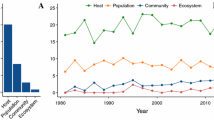Abstract
In the discussion in Nature of April 25 between Mr. Ramsbottom and a reviewer, on the occurrence of disease among animals and plants in Nature, one factor appears to have been ignored, and that is the drastic operation of natural selection in weeding out not merely diseased individuals but also any that carry a weakness reducing their fitness to their environment. When the reviewer argues that parasitism may not be a disease but only an “innocuous modus vivendi”, is he not begging the question? Relatively innocuous parasitisms persist just in the proportion that the parasite does not enfeeble the host, but no distinction of kind can be made between them and definitely lethal diseases. Animals or plants carrying a ‘disease’, that is, some lowering of the normal vitality, whether genetic, parasitic, or environmentally caused, are so promptly and thoroughly eliminated that examples will be observed very rarely, because such a very small proportion of individuals of any species are closely examined. We hear, for example, of grouse disease because so many thousands of grouse are shot each year. What about rinderpest and East Coast fever? They have taken heavy toll of African game without any intervention of man.
Similar content being viewed by others
Author information
Authors and Affiliations
Rights and permissions
About this article
Cite this article
HALL, A. Disease in Nature. Nature 127, 704–705 (1931). https://doi.org/10.1038/127704b0
Issue Date:
DOI: https://doi.org/10.1038/127704b0
- Springer Nature Limited





